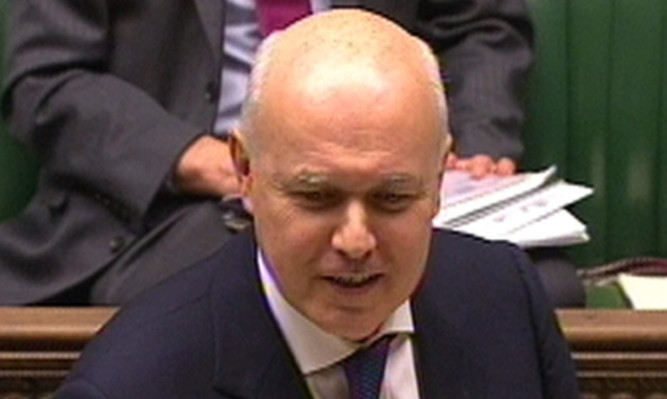The Government’s plan for a real-terms cut in working-age benefits has cleared its first Commons hurdle, after heated exchanges between coalition and Labour MPs.
MPs voted by 324 to 268 to give the legislation a second reading but former Liberal Democrat minister Sarah Teather rebelled and warned attacks on the poor could lead to the “fragmentation” of society.
Labour branded the plan a “strivers’ tax”, as 68% of households caught by the below-inflation rise in benefits were in work.
But Work and Pensions Secretary Iain Duncan Smith accused Labour of tying working families into the benefits system and “buying votes” by increasing handouts.
The Welfare Benefits Uprating Bill limits rises in most working-age benefits to 1% in 2014-15 and 2015-2016 instead of linking them to inflation.
Similar measures for 2013-14 will be introduced separately.
A Labour bid to block the Bill and insist on a “compulsory jobs guarantee” was defeated by 328 votes to 262.
Mr Duncan Smith said that since the beginning of the recession incomes for those in work have risen by about 10% but for those on benefits they have risen by about 20%.
He said: “What we are trying to do over the next few years is get that back to a fair settlement and then eventually it will go back on to inflation.”
But shadow work and pensions secretary Liam Byrne claimed the Bill was a “hit and run on working families” who were paying the price for the Chancellor’s economic failure.
“Millionaires will have £107,000 more from next year to help them heat the swimming pool,” he said.
“It’s not Britain’s millionaires who are picking up the tab, it is Britain’s working families. This bill is a strivers’ tax, pure and simple.”
Labour former foreign secretary David Miliband described the bill as “rancid” and claimed it was motivated by party politics.
Ms Teather, who lost her job as children and families minister last September, hit out at the way the arguments over the below-inflation rise had been characterised as a division between “shirkers and strivers.”
In the Autumn Statement Mr Osborne said the measure was about “being fair to the person who leaves home every morning to go out to work and sees their neighbour still asleep, living a life on benefits”.
But Ms Teather said: “A fissure already exists between the working and non-working poor. Hammering on that faultline with the language of shirkers and strivers will have long-term impacts on public attitudes, on attitudes of one neighbour against another.”
